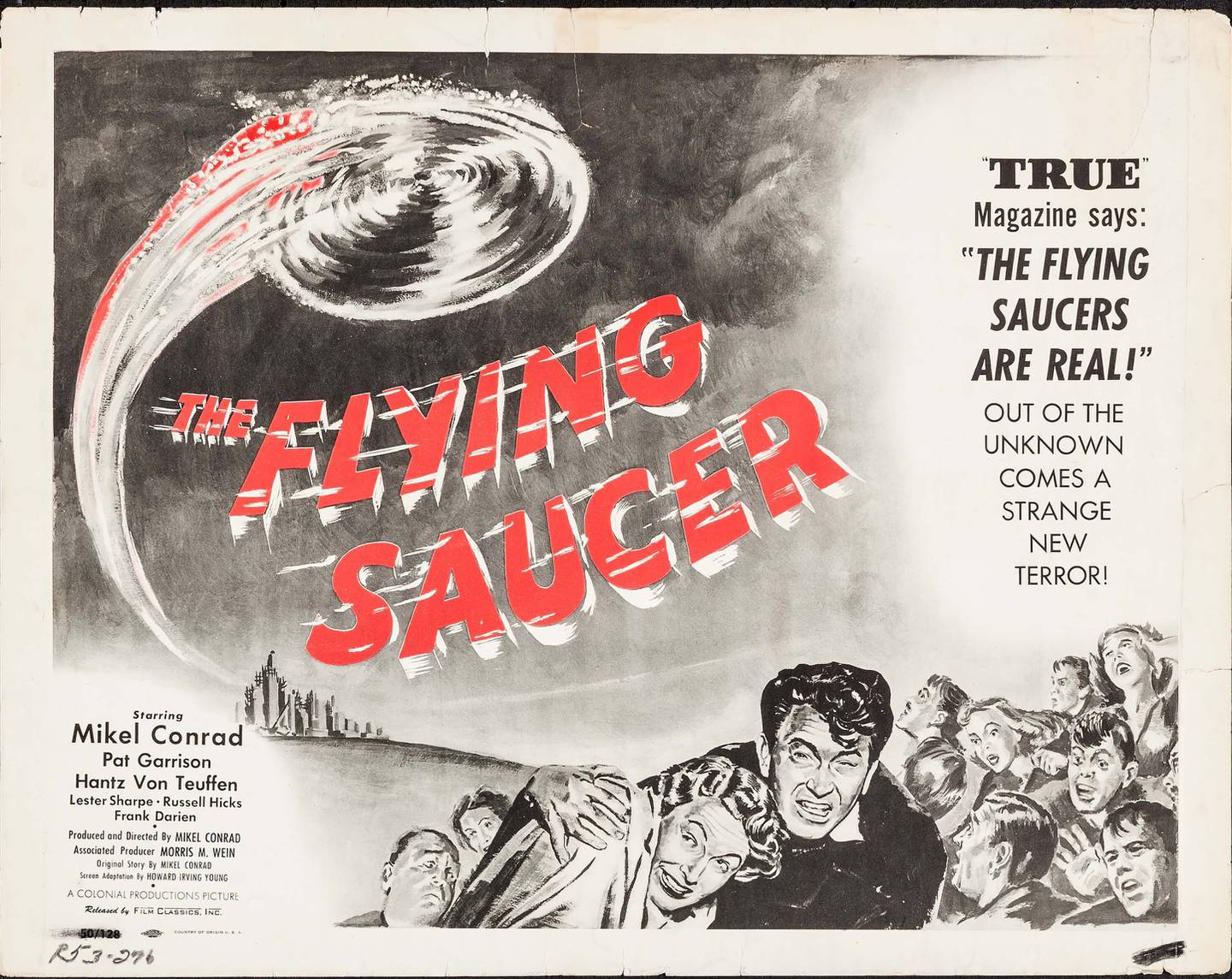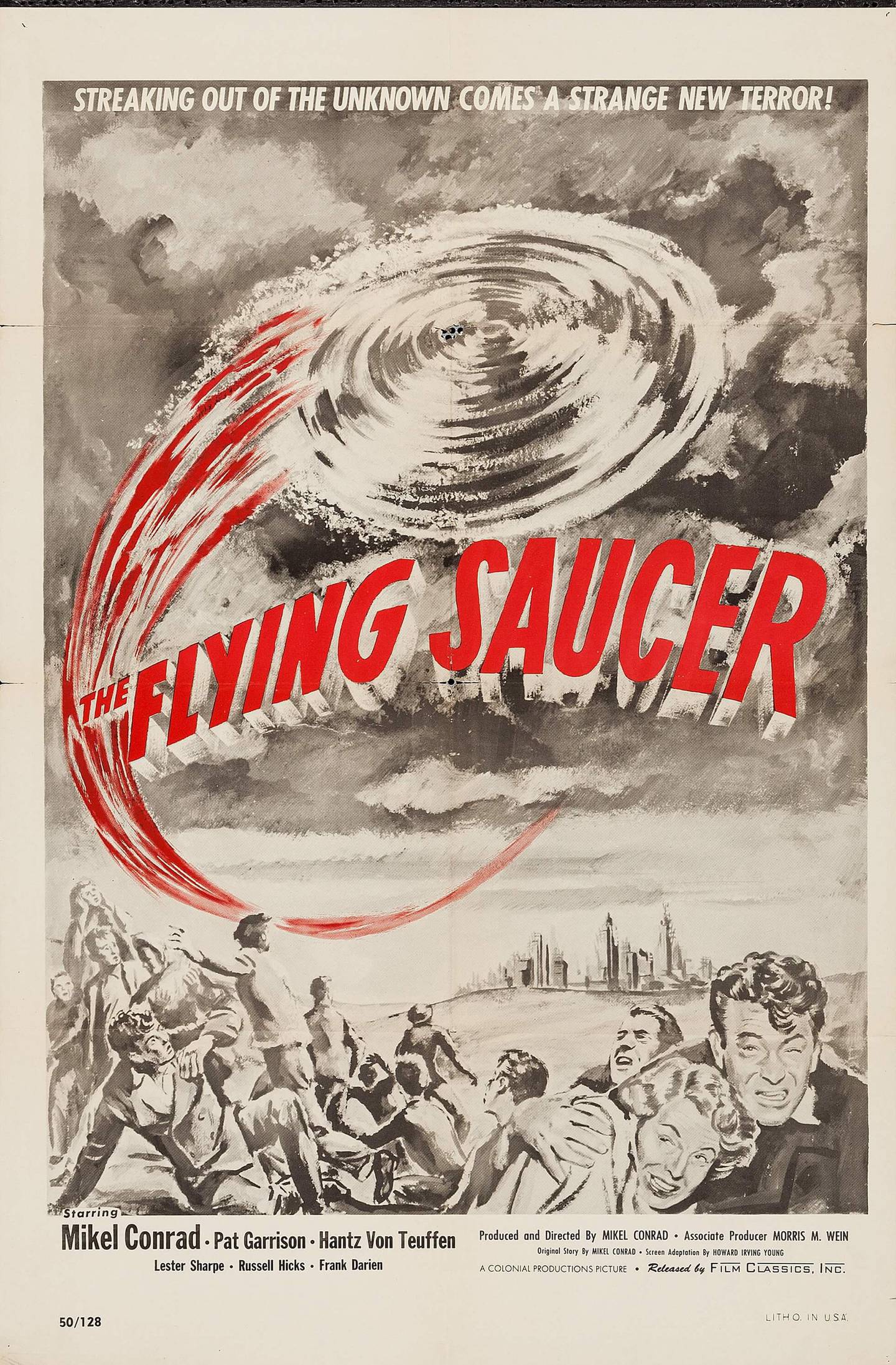A ‘strange light bouncing up and down in the sky’: The history of UFO sightings in Alaska

Part of a continuing weekly series on Alaska history by local historian David Reamer. Have a question about Anchorage or Alaska history or an idea for a future article? Go to the form at the bottom of this story.
On July 9, 1947, three teenage Anchorage girls — Judy Kerr, Vicky Novack and Nancy Green — claimed to see an unusual white “disc-shaped object” above Elmendorf Air Force Base, where it streaked across the sky and disappeared to the south. According to the girls, the unidentified object “traveled at great speed and was moving faster than ordinary planes.” The girls also said that it was smaller than any fighter plane and not a weather balloon, which they were familiar with since they were all daughters of servicemen and passed the time watching the base flight operations. These three girls had made the first documented UFO sighting in Anchorage history.
The continuing American fascination with UFOs began in 1947, not in Roswell, New Mexico, but Mineral, Washington, a small town south of Tacoma. On June 24, amateur pilot Kenneth Arnold was in the air above Mineral when he spotted nine unidentified flying objects in an echelon formation traveling at an extreme speed. Lights flashed from them, all together and then in a sequence down the line of objects. He reported the sighting after he landed and was interviewed by an intrigued reporter the next day.
The story spread like wildfire from there, aided by overeager editors. Headlines boldly announced reports of “flying saucers” and “flying discs,” wordings based on a misunderstanding. Arnold said the objects above Mineral “flew like they take a saucer and throw it across the water,” skipping and fluttering in the air. He did not say the objects looked like saucers or discs. However, the misquote endured, influencing science fiction and the gullible public for decades.
From almost nothing, there were suddenly daily sightings of UFOs across the country in the wake of Arnold’s report. In just 1947, there were more than 850 reports of flying discs and saucers in America and Canada. The concept of UFOs burrowed itself into the public psyche, fueled by the rapidly growing fears of the postwar world, of atomic weapons and the Cold War with the Soviet Union. For many caught within the hysteria, the supposed appearance of flying saucers marked the potential end of civilization as they knew it, whether by Russians or aliens.

On July 8, the Roswell Army Air Field issued a press release stating Army personnel from there had recovered a “flying disc” from a local ranch, notably utilizing the new phrasing promulgated by sensationalist newspaper accounts elsewhere. Roger Ramey, Commanding General of the Eighth Air Force, issued a correction later that day that the “disc” was simply a weather balloon, but the damage was done.
The Anchorage girls promptly reported their sighting to the Anchorage Daily Times. Before that week, there had been zero references to “flying saucers” or “flying discs” printed in the local newspapers, covering the previous 32 years of Anchorage’s existence. On July 7, the Daily Times ran its first article on the UFO craze, just two days before the three girls claimed to see something over Elmendorf. On July 8, the Daily Times published the first local coverage on the developing story out of Roswell, fueled by the original Army press release that described the weather balloon as a “flying disc.” The article also noted, “None have been reported in Alaska, yet.” Then, the very next day, three teenagers just happened to see a UFO.
No one else from either the Army, Air Force or Merrill Field saw the UFOs. Lee Teague, special agent in charge of the Anchorage FBI office, stated, “We haven’t heard a single report of any persons seeing a flying disc in Anchorage, or even Alaska.”
As it happened across the nation, once one person made a UFO sighting, more reports followed. A railroad foreman claimed to have seen a flying saucer in Healy six weeks prior but had declined to report it “for fear of being laughed at.” In January 1950, a retired fisherman in Sitka, Jorgen Mortenson, said he saw a flying saucer outside his cabin at Jamestown Bay. Said Mortenson, “I am positively not mistaken. I saw it but did not mention it as I thought people would think me a little off.” Over a week that October, there were seven UFO sightings in Sitka. On Nov. 30, 1950, a “brilliant blue-white” object, almost certainly a meteor, flashed across the sky with sightings from Fairbanks to Kodiak. In early November 1952, two men reported a “strange light bouncing up and down in the sky” over Anchorage. In 1953, six women claimed to have watched a flying saucer passing back and forth over Eklutna for two hours.

The Fotoshop on Fourth Avenue got in on the fun and offered a $200 reward in 1947, roughly $2,700 in 2022 dollars, for “one authentic flying disc or flying saucer.” To be clear, they wanted an actual flying saucer, not a photograph of one. As their announcement stated, “We want one so that we can take a picture of it to add to our large collection. So just carry, haul, or fly one up to the door and collect your reward.”
Flying saucers were embedded in American popular culture, including in Alaska. By December 1947, Anchorage shops had the new record from the Buchanan Brothers, “Those Flying Saucers.” There were flying disc dances in Anchorage and a Flying Saucer Delivery Service in Fairbanks. Multiple boats in Alaska were named the Flying Saucer, including a hydroplane that raced at Lake Wasilla. This wave of interest culminated in the first movie about UFOs, which was set in Alaska.
The straightforwardly titled “Flying Saucer” was released in 1950. Star Mikel Conrad (1919-1982) also wrote the story, produced, and directed. For a B-movie actor with few credits, the film was his big swing for the fences, his attempt to capture the zeitgeist and subsequently profit, in reputation and at the bank. His timing was excellent, but his execution failed him.
The plot, such as there is a plot in the threadbare production, concerns playboy Mike Trent (Conrad), who the American government dispatches to track down a flying saucer at Taku Glacier before Soviet spies capture its secrets. As a government official declares, “It appears as if it was designed for one purpose, to carry the atomic bomb. Now the first country that learns the secret of the flying saucer will control the skies of the world, and I don’t want that country to be Russia.”
Over a laborious 75 minutes, Conrad travels to Alaska, courts the female operative assigned to him, drunkenly passes out on an ice floe, is captured by Russian agents, and discovers the secret of the flying saucer. Instead of aliens, it is just an experimental jet aircraft that explodes at the movie’s end. As exciting as that might sound in theory, around half the film is stock footage of Alaska shot by Conrad after he finished shooting a different movie in Nome, the 1948 thriller “Arctic Manhunt.”
Before “The Flying Saucer” hit theaters, Conrad staged a publicity stunt, claiming that the film contained footage of an actual flying saucer in Alaska. As he told the tale, he had followed Alaska Native rumors to Taku Glacier, where he saw a “disc-like thing whirling across the sky.” He further claimed that the Air Force seized most of the footage. The film opens with a mysterious titled card that states, “We gratefully acknowledge the cooperation of those in authority who made the release of the ‘Flying Saucer’ film possible at this time.” The stunt and movie failed. By the end of the decade, Conrad’s acting career was over, with just a handful more, mostly uncredited appearances.
“The Flying Saucer” film is a historical curiosity. It beat better films about flying saucers to the theater, including “The Day the Earth Stood Still” (1951) and “Forbidden Planet” (1956), but is best enjoyed today as trivia than as an actual piece of entertainment. For those still interested, it is available online on a variety of platforms and is a unique window into the pervasiveness of the 1940s and 1950s flying saucer craze, even in Alaska.
• • •
Key sources:
“‘Flying Saucers’ Reported Seen Across Nation.” Anchorage Daily Times, July 7, 1947, 1.
“Flying Saucer Seen by Local Man.” Sitka Sentinel, January 3, 1950, 2.
Fotoshop advertisement. Anchorage Daily Times, July 23, 1947, 3.
Garber, Megan. “The Man Who Introduced the World to Flying Saucers.” Atlantic, June 15, 2014.
“Girls Report ‘Flying Discs’ over Elmendorf.” Anchorage Daily Times, July 10, 1947, 1.
“Meteor, Russians, Flying Saucer? Aerial Mystery Puzzles Residents.” Anchorage Daily Times, December 1, 1950, 1, 3.
Neill, Frank. “In Hollywood.” Endicott Daily Bulletin, October 24, 1949, 9.
“‘Quake Follows Flying Saucers, Mystery Blast.” Anchorage Daily Times, November 5, 1952, 1.
“Rancher Finds ‘Flying Disc.’” Anchorage Daily Times, July 8, 1947, 1.
“Strange Flying Objects Sighted Near Eklutna.” Anchorage Daily Times, January 23, 1953, 1, 4.
Untitled editorial. Sitka Sentinel, October 10, 1950, 2.
This article has been archived for your research. The original version from Anchorage Daily News can be found here.


